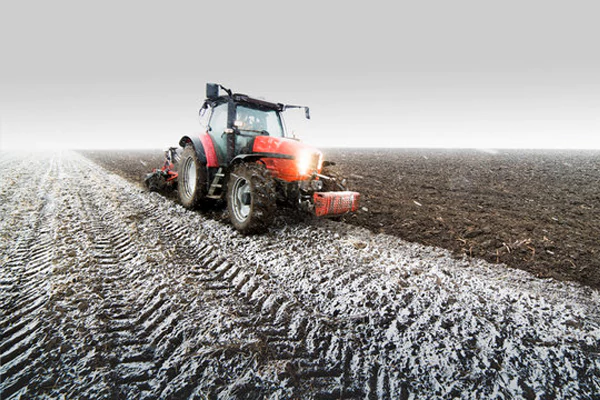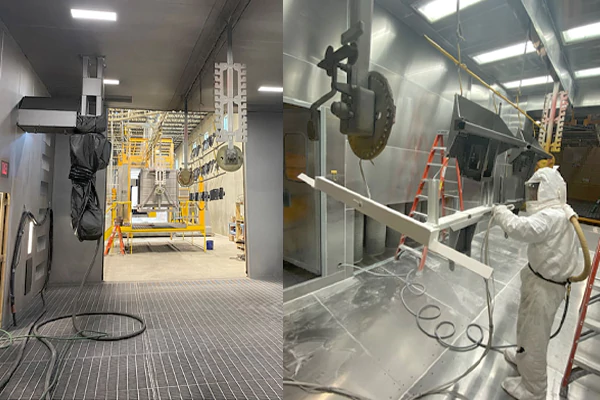Hydraulic hose tracking is a vital practice for ensuring safety and operational efficiency in vehicles, industrial machinery, and heavy equipment. By systematically monitoring hose conditions, you can identify wear, leaks, and potential failures before they compromise system performance or cause costly downtime, protecting both operators and equipment.
Implementing hydraulic hose tracking programs allows businesses to maintain consistent hydraulic system performance. Regular inspection, maintenance, and record-keeping help prevent accidents, reduce repair costs, and extend the service life of hoses. This proactive approach ensures reliable fluid transmission and maximizes productivity in demanding industrial and vehicle applications.
What is Hydraulic Hose Tracking?
Hydraulic hose tracking is the systematic process of monitoring, inspecting, and documenting the condition and performance of hydraulic hoses within a system. It involves recording hose installation dates, maintenance activities, pressure ratings, and signs of wear or damage.
By tracking these factors, operators can identify potential failures before they occur, prevent leaks, reduce downtime, and ensure consistent system performance. Effective hydraulic hose tracking enhances safety, extends hose lifespan, and improves reliability across vehicles, industrial machinery, and heavy equipment.
What is Hydraulic Hose Tracking Used for?
Hydraulic hose tracking is used to maintain system safety, performance, and reliability by monitoring hose conditions, preventing failures, and ensuring timely maintenance. This process helps operators manage hydraulic systems efficiently, reduce downtime, and extend the service life of hoses in vehicles and industrial machinery.
- Preventing Hose Failures: We track hydraulic hoses to identify wear, leaks, or damage early. By monitoring hose condition regularly, we can replace or repair hoses before failures occur, reducing the risk of accidents, system downtime, and costly emergency repairs.
- Ensuring Safety: Hydraulic hose tracking improves operational safety by preventing sudden hose bursts or leaks. We implement inspection routines and documentation to ensure hoses are functioning correctly, protecting operators, machinery, and the surrounding environment from potential hazards.
- Optimizing Maintenance Schedules: We use hydraulic hose tracking to plan timely maintenance and replacements. By analyzing usage data and wear patterns, we can schedule interventions proactively, minimizing unexpected downtime and keeping machinery running efficiently without unnecessary interruptions.
- Extending Hose Lifespan: Tracking hydraulic hoses allows us to monitor pressure, temperature, and environmental conditions, helping prevent excessive wear. Proper monitoring and maintenance extend the life of hoses, reduce replacement costs, and maintain reliable hydraulic system performance.
- Improving System Efficiency: We track hydraulic hoses to ensure consistent fluid flow and pressure. By maintaining hoses in optimal condition, hydraulic systems operate more efficiently, reducing energy loss, improving responsiveness, and supporting smooth, reliable operation across vehicles and industrial equipment.
Hydraulic Hose Tracking Methods

Effective hydraulic hose tracking requires systematic methods to monitor hose conditions, prevent failures, and ensure safety. Using proper tracking techniques helps extend hose life, optimize maintenance, and maintain consistent system performance. Different methods combine manual inspections, digital tools, and record-keeping to achieve reliable monitoring.
Visual Inspection
Visual inspection involves regularly examining hydraulic hoses for signs of wear, cracks, leaks, or abrasion. We check hose surfaces, fittings, and connections to identify early issues. This simple method helps prevent unexpected failures, maintain safety, and ensure hoses operate efficiently under normal working conditions.
Scheduled Maintenance
Scheduled maintenance tracks hydraulic hose usage based on time, pressure cycles, or mileage. We replace hoses proactively before they fail, minimizing downtime and avoiding costly repairs. Routine maintenance ensures hydraulic systems remain reliable, extending the service life of hoses and maintaining consistent performance.
Record Keeping
Record keeping involves documenting installation dates, inspection results, pressure ratings, and maintenance activities for each hydraulic hose. We use logs or software systems to monitor hose history. Accurate records help identify patterns, plan replacements, and maintain overall system safety and efficiency.
Barcode or QR Code Tracking
Barcode or QR code tracking uses scannable labels on hydraulic hoses to store identification and maintenance information. We scan codes during inspections or servicing to quickly access hose data. This method improves accuracy, simplifies record-keeping, and enhances monitoring efficiency in complex systems.
Digital Monitoring Systems
Digital monitoring systems use sensors to track hydraulic hose pressure, temperature, and fluid flow in real-time. We collect continuous data to detect anomalies or signs of wear. These systems provide proactive alerts, reduce the risk of failures, and support predictive maintenance strategies for optimized performance.
Tracking Label Imprinted on Hydraulic Hose Cover
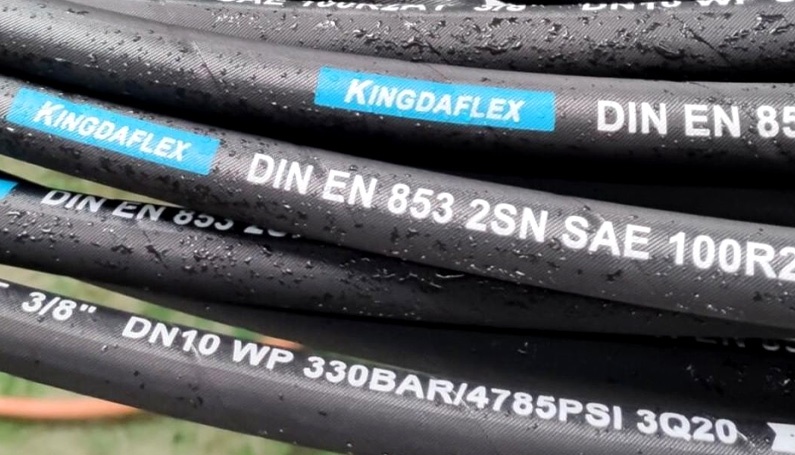
It’s not that easy to recognize the hydraulic hose’s specific size, type, pressure rating, and other descriptive data related to the hydraulic hose working for the hydraulic system, we will mark the label on the surface of the hydraulic hose cover.
So that you can read the specifications, hydraulic hose standards, hydraulic hose size, hydraulic hose brands from the outer cover because all of this descriptive information will be imprinted on the hydraulic hose tube.
You will know the basically important specifications of this hydraulic hose, reading from the hydraulic hose cover.
For example, this is the DIN EN853 2SN SAE 100R2 hydraulic hose, with 2 layers of steel wire reinforcement. Yes, you can get the hydraulic hose type from the hydraulic hose standard, to know the hydraulic hose structure, how many layers of the reinforcement are without cutting the hydraulic hose.
And here we can customize the hydraulic hose, to imprint your hydraulic hose brand name on it to show your brand. Flexible for you to print anything you want.
Hydraulic Hose Labelling
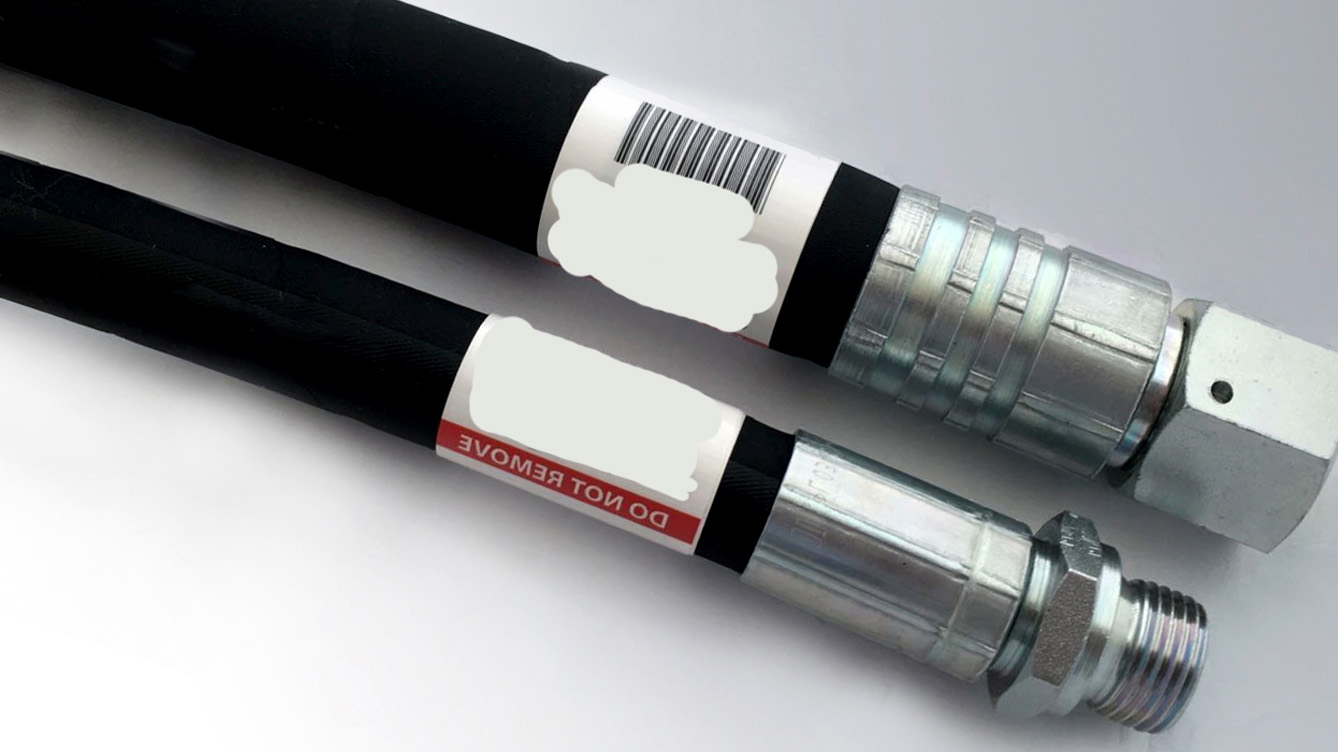
As shown in the image above, the hydraulic hose labeling system can help you mark hydraulic hoses. This is helpful for you to identify your hydraulic hose.
You can use hydraulic hose labels to manage your hydraulic hose warehouse, which can help you seek the right hydraulic hose for your hydraulic system. You know that it’s normal for you to use different hydraulic hoses, with different diameters, lengths for the same machine.
You can print the basic info of the hydraulic hose on the marker, or label, like the sticker, and then adhere the label on the hydraulic hose body. This can help you save so much time and money on hydraulic hose management.
Lately, you can apply this method when you attend the hydraulic hose trade show or exhibition to display your hydraulic hose samples to the audience, to make your hydraulic hose place in order.
Help You Find the Right Hydraulic Hose
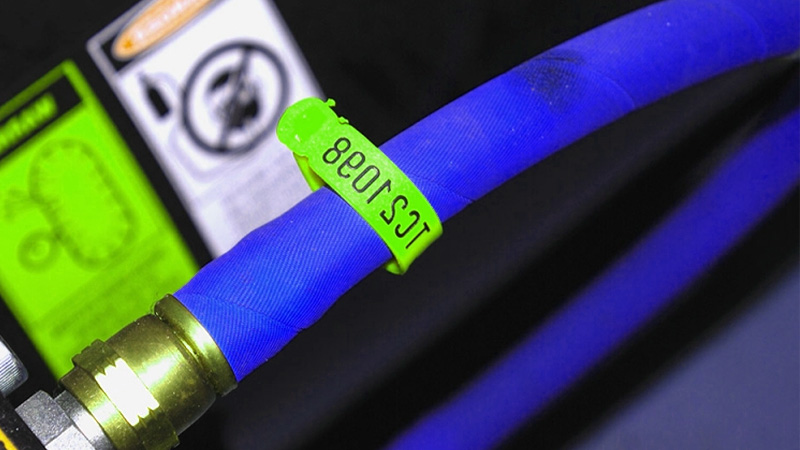
Marking with the hydraulic hose label, it is helpful for you to find the right hydraulic hose when you replace the hydraulic hose. Here are many different types of hydraulic hose stored, and you can make the hydraulic hose stickers to label anything important to help you to category your hydraulic hose.
It’s flexible to determine what code you want to print on the hydraulic hose labeling mark, normally they are hydraulic hose lengths, diameters, sizes, specifications, and etc. You can name your hydraulic hose tracking code according to your own requirement, to make it easier to store and manage your sampling.
Conclusion
Hydraulic hose tracking is essential for preventing unexpected failures and maintaining safety in any hydraulic system. Regular monitoring and inspection allow timely replacement or repair, ensuring that hoses continue to perform optimally and reducing the risk of accidents, system downtime, and operational inefficiencies.
At Kingdaflex, we provide a wide range of hydraulic hoses suitable for industrial, commercial, and automotive applications. Our hoses are durable, reliable, and designed to withstand high pressure, temperature, and wear, making them ideal for use in systems that require consistent hydraulic performance.
For wholesale hydraulic hoses, trust Kingdaflex to supply high-volume orders with competitive pricing and reliable delivery. We cater to distributors, workshops, and industrial operators, providing hoses that meet diverse requirements and help maintain safety, efficiency, and long-term performance in all hydraulic systems.


